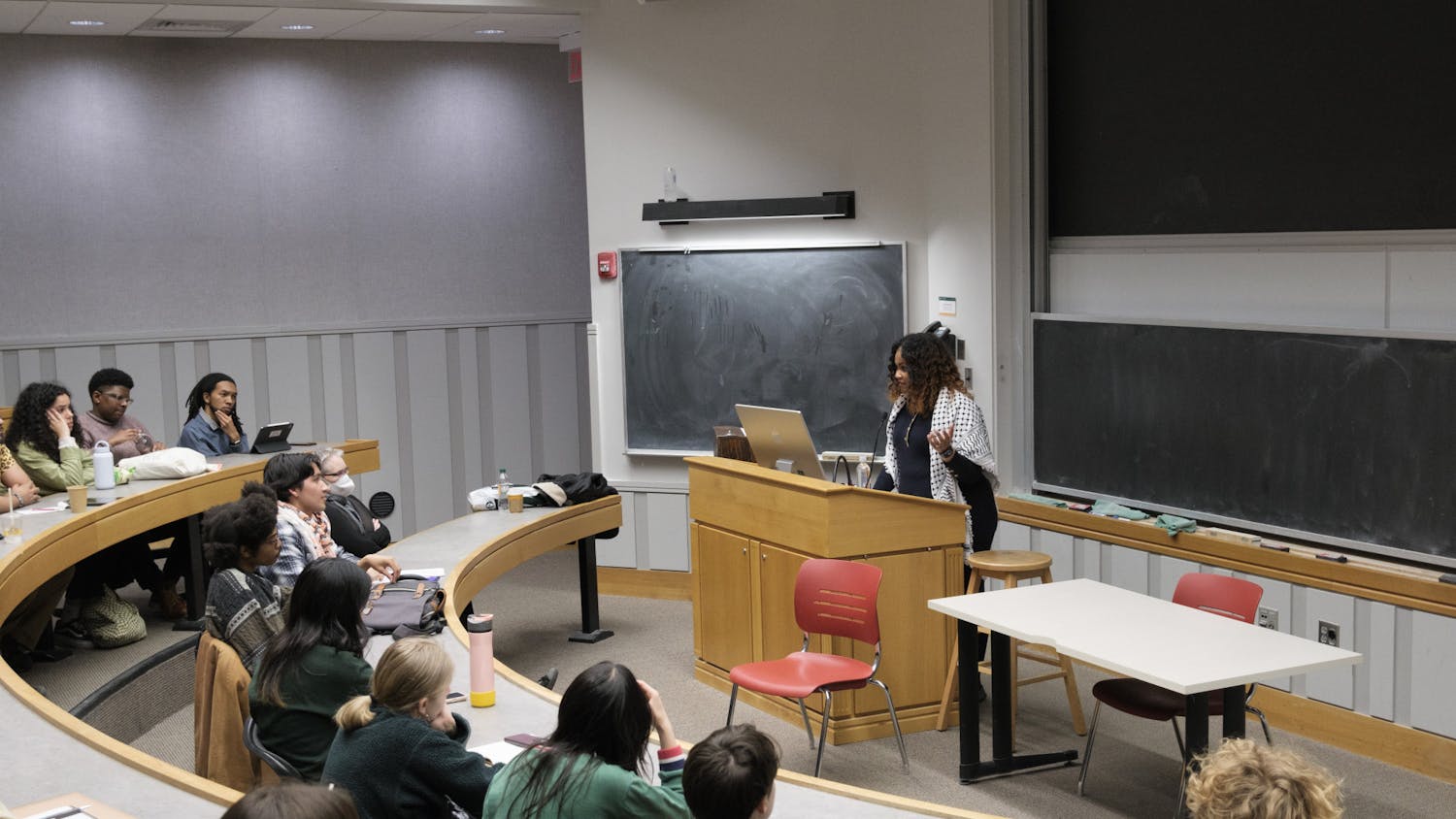Saint Teresa of Avila was unenthusiastic when she joined her local convent, but her radical ideas and elaborate visions soon attracted the attention of the Spanish Inquisition, Christopher van Ginhoven '01 said in a lecture on Tuesday. He discussed Saint Teresa's seminal 1577 work, "The Interior Castle," which describes the process of prayer as a person passing through a castle made of diamond.
Van Ginhoven earned his bachelor's and master's degrees in comparative literature from Dartmouth and is a professor of language and culture studies at Trinity College. He said he was excited to be back on campus, and pointed out the Spanish department professors in the audience who had taught him as an undergraduate.
"This is not just another talk, this is for me an opportunity to come back to a place that feels very much like home," he said. "I've had a big smile on my face since the moment I arrived."
Before launching into his academic discussion of Saint Teresa's writings, van Ginhoven gave a brief history of her life and work.
Born in 1515, her life spanned the 16th century, also known as the Golden Age of Spain. Saint Teresa's family sent her to a convent at an early age as was the custom of many young women at the time who were not their families' first daughters.
Once ensconced in the convent, Saint Teresa began to have mystic visions of Jesus. Her confessor became concerned that the visions were generated by the devil, and asked her to document each vision.
This collection of writings formed the basis for Saint Teresa's first work, a spiritual autobiography. Due to the book's unusual nature, members of the Spanish Inquisition quickly became suspicious and confiscated the manuscript.
Saint Teresa waited for years before she began writing a second book, "The Interior Castle," which she styled as an educational manual for other nuns at her convent in order to avoid the Inquisition's censorship. Written 11 years later, the book clarified and elaborated on themes from her earlier writings.
"The second book is the memory she had of the previous book," he said. "As 11 years had passed, she also had a deeper understanding of the things she was talking about."
Concluding his review of Saint Teresa's life, van Ginhoven posed questions about the book's content and significance to Christianity.
Before she was able to discuss her colorful visions, Saint Teresa had to establish the theory that prayers based on images were valid. She first had to carefully modify the prevailing theory of Saint Augustine, who taught that prayer was stronger if it did not rely on imagery.
"She has to be very careful because she can't say Augustine is wrong," he said. "She tries as much as possible to find a way around that law that Augustine institutes."
Upon creating a newer visual theory of prayer, Saint Teresa was able to set forth her ideas in "The Interior Castle." The book established a "Kafkaesque" vision of the soul or prayer as a diamond castle, van Ginhoven said.
"The book was intended as a manual for those seeking to make progress in prayer, particularly her nuns, and also as a testament," he said. "The book begins with a description of a castle made of a single diamond or a very clear crystal with as many rooms as there are in heaven."
A soul enters the castle as prayers begin and proceeds through the rooms until reaching the most secretive inner room, he said. Distractions along the way may eject the soul from the castle, forcing individuals to begin the prayer once more.
Saint Teresa suggested nuns locked away in convents "take [their] delight in this interior castle," she wrote. Her vision is mainly based on pleasure, which contains some sexual connotations, van Ginhoven said.
One "delectable" image Saint Teresa said souls should take pleasure in is that of Christ, which Saint Teresa herself had begun to see. Her first vision was that of God's hands, but she was eventually able to see the whole figure of Christ.
"In terms of her own transition, it was a slow process," he said. "For many years, she only had these intellectual visions, and a lot of time had to pass before she actually saw something."
Though other writers had used the image of prayer and the soul as a castle, van Ginhoven said Saint Teresa was the first to guide readers through the castle entrance and rooms that lay inside.
Audience members pointed to the novelty of the saint's castle metaphor, as well as her insistence on pleasure. Van Ginhoven said Saint Teresa's writings represented an alternate theory of Catholicism, in which mystics are focused on the soul's enjoyment rather than its use.
Hanna Kim '15 attended the lecture for her introductory Hispanic studies class. Kim said some of the academic parts of the lecture were confusing.
"Some of the references I didn't really understand because I've never learned about it," she said. "Overall, I enjoy having professors from other schools come in and speak about new topics."
Jacob Stern '15 said he appreciated that van Ginhoven attended Dartmouth.
"It was cool to hear from a visiting professor who studied here not too long ago with the same professors," he said.
The lecture, "Mysticism and Aesthetics: On Saint Teresa of Avila's Interior Castle," was sponsored by the Spanish and Portuguese department.



